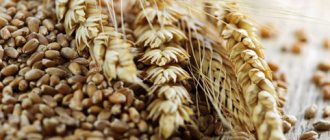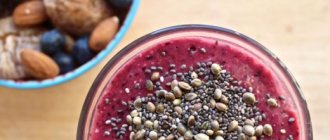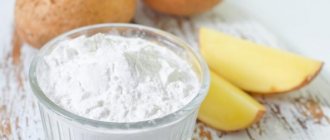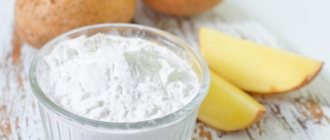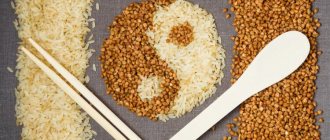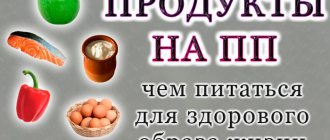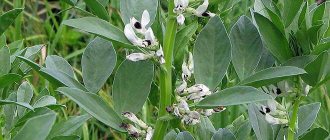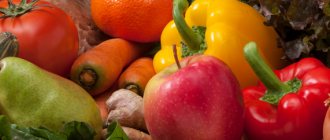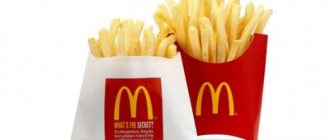What is fiber?
In some parts of plants, special fibers are formed - cellulose. The peculiarity of these fibers is that they are not susceptible to the action of enzymes secreted by the upper parts of the digestive tract. Digestion of fiber occurs in the intestines. The most popular sources of fiber are cabbage, bean stalks, and grains. Beneficial fibers pass through the entire digestive tract into the intestines, where they are processed by beneficial microflora.
The main function of plant fibers is to help the gastrointestinal tract. They help to more actively promote the food bolus and fully digest it. Staying food in the digestive tract for too long causes bloating, flatulence, and increased gas formation. Fiber components accelerate the natural process of bowel emptying. The beneficial properties of plant fibers help eliminate problems in the stomach and intestines.
- Diabetes protection
- TOP 12 foods with the highest fiber content
- Which fiber is best to buy?
- 15 Best Foods Rich in Soluble Fiber
When to cut back on fiber
Fiber can be beneficial and harmful. The latter occurs when you do not listen to the advice of doctors. Now, sometimes there are situations where people should stick to a low fiber diet, at least for a while. This usually applies to individuals undergoing chemotherapy, after radiation, or before/after surgery. In such cases, it is necessary to provide rest to the gastrointestinal tract. But people with Crohn's disease, inflammatory bowel disease, diverticulosis and ulcerative colitis will have to stick to a low-fiber diet for a longer period of time.
Chronic gastrointestinal diseases, diarrhea, flatulence, reflux, food allergies and intolerance to certain foods are reasons to reduce fiber intake.
The human body's digestive system is not designed to break down fiber. The undigested substance enters the intestines, where beneficial bacteria (probiotics) feed on the fiber and multiply in it. However, if pathogenic bacteria or fungi “settle” in the intestines, the fiber will serve as a breeding ground for these microorganisms, which, as you understand, will only aggravate the painful condition caused by pathogenic microflora. For this reason, it is better to avoid the fibrous substance until a healthy balance of intestinal bacteria is restored. This will allow, so to speak, to starve out microorganisms that are unusual for humans.
In such cases, legumes, whole grains, raw vegetables and fruits should be avoided. Also, do not abuse meat, caffeine, fried and spicy foods, and reduce portions of cocoa and nuts. Instead, it is better to focus on refined grains, cooked vegetables, ripe melons, peaches, plums, bananas and apricots.
Types of fiber
There are two types of plant fibers:
- Soluble fiber - has the property of dissolving in an aqueous environment. The fibers are susceptible to the action of enzymes and change their consistency to a jelly-like consistency. As a result, food digestion slows down. A person does not feel hungry for a longer period of time. Consumption of soluble fiber helps control appetite, reduce and maintain weight.
Key benefits of soluble fiber:
- Reducing levels of “bad” cholesterol.
- Controls blood glucose levels. This property is especially valuable for patients with diabetes mellitus and for people suffering from metabolic syndrome.
- Removing toxins and bile acids from the body.
- Insoluble fiber is not digestible under the influence of gastrointestinal enzymes, but actively stimulates the process of excretion of intestinal contents. People who take insoluble fiber note that the problem of constipation is solved very quickly. This type of fiber is found in large quantities in cereals, bran, nuts, and some vegetables. The work of insoluble components is similar to the functions of a sponge, which absorbs cholesterol, toxins, heavy metal salts, radionuclides, and fatty acids. “Filled” fibers are quickly eliminated from the intestines.
Citrus fruits, fruit pulp, beans, carrots, peas, oats, and flax seeds are rich in soluble fiber fiber. The most popular source is pectin. Thanks to pectin, food changes its structure to a jelly-like structure as it absorbs a lot of liquid.
The optimal ratio of insoluble and soluble fiber in the daily diet should be 75% and 25%, respectively. A special calculation of the volume of different types of fiber is not required, since many products contain both types. To get the maximum effect, you should combine products containing different fibers.
Fiber can be divided according to other characteristics:
- Cellulose. In everyday life, it is more often called bran, since it is found in large quantities in the shell of cereals. Cellulose stimulates intestinal peristalsis. Due to the rapid passage of food, harmful substances are not absorbed by the intestinal villi.
- Pectin. The source of soluble fiber is the peel of fruits, vegetables, and some citrus fruits. Pectin promotes the removal of heavy metal compounds. Food rich in pectin lingers in the stomach, keeping you feeling full for a long time.
- Hemicellulose. Semi-soluble fibers actively absorb liquid along with toxic components. A specific process controls blood cholesterol levels and lipid metabolism. The main sources of hemicellulose are oats and barley.
- Gum. Beans, a food product made from oats, contain valuable soluble fiber. It has an enveloping property. After the gum enters the body, the absorption of glucose through the walls of the stomach and intestines slows down.
- Lignin. Found in large quantities in bran, strawberries and various cereals. The surprising thing is that the longer the product sits, the more lignin is formed in it. Insoluble fiber binds to bile, which inhibits the absorption of cholesterol and protects the inner intestinal wall from toxic components.
Sources
- Cordeiro BF., Alves JL., Belo GA., Oliveira ER., Braga MP., da Silva SH., Lemos L., Guimarães JT., Silva R., Rocha RS., Jan G., Le Loir Y., Silva MC., Freitas MQ., Esmerino EA., Gala-García A., Ferreira E., Faria AMC., Cruz AG., Azevedo V., do Carmo FLR. Therapeutic Effects of Probiotic Minas Frescal Cheese on the Attenuation of Ulcerative Colitis in a Murine Model. // Front Microbiol - 2022 - Vol12 - NNULL - p.623920; PMID:33737918
- Yamashita LM., Corona LP., Dantas da Silva E., Monteiro de Mendonça AP., de Assumpção D., Barros Filho AA., Barrett JS., Geloneze B., Vasques ACJ. FODMAP project: Development, validation and reproducibility of a short food frequency questionnaire to estimate consumption of fermentable carbohydrates. // Clin Nutr - 2020 - Vol - NNULL - p.; PMID:33309413
- Renna M., Signore A., Paradiso VM., Santamaria P. Faba Greens, Globe Artichoke's Offshoots, Crenate Broomrape and Summer Squash Greens: Unconventional Vegetables of Puglia (Southern Italy) With Good Quality Traits. // Front Plant Sci - 2022 - Vol9 - NNULL - p.378; PMID:29636760
How many grams of fiber do you need per day?
It is a mistake to believe that foods high in fiber can be consumed uncontrollably or in large quantities. Recommended doses of plant fibers that bring certain benefits to the body have been determined. The amount of fiber depends on gender and age.
Daily dose for men:
- Up to 50 years old - 38 g.
- Over 50 years old - 30 g.
Daily dose for women:
- Up to 50 years - 25 g.
- Over 50 years old - 21 years
To provide the body with the necessary fiber, it is enough to eat a small portion of porridge, a couple of fruits, and a small bowl of vegetable salad every day. There is an opinion among nutritionists that bread should be eliminated from the diet. This is not true - it is important to pay attention to the type of bread. It is better to stick to products made from wholemeal flour. This bread stimulates the intestines and does not contribute to the appearance of extra pounds.
On average, for every 1000 calories you should have 14 to 20 grams of plant fiber.
When do you need more/less fiber?
The body needs more plant fibers in a number of conditions:
- During pregnancy. Carrying a child requires an increase in the volume of food portions, and therefore plant fiber.
- With age. Maximum fiber consumption occurs during the period of greatest activity - from 14 to 50 years. With the advent of maturity, the need for fiber decreases by 5-10 units.
- Vitamin deficiency, anemia of any origin. Fiber cleanses the intestinal walls, which facilitates the absorption of vitamins.
- Insufficient activity of the stomach and intestines. The action of plant fibers stimulates physiological processes in the gastrointestinal tract.
- Excess weight. Getting rid of extra pounds occurs as a result of normalizing digestive functions.
The amount of fiber should be reduced in a number of cases:
- During the acute period of inflammatory diseases of the stomach and pancreas.
- For dysbacteriosis.
- With flatulence.
Fiber-rich menu options
Breakfast:
- whole grain oatmeal;
- whole grains;
- pancakes made from wholemeal flour/buckwheat with fruits or berries;
- bran with fruit;
- a mixture of fiber-rich cereals;
- “rolled oatmeal” with apples, oranges, berries, bananas, almonds.
Lunch/dinner:
- wholemeal pasta;
- brown rice;
- bean dishes;
- Corn tortillas with eggs and cheese/with turkey/with cheese and vegetables;
- lentil dishes;
- baked potatoes with skin;
- cabbage dishes.
Dessert:
- wholemeal cookies and muffins;
- bran baked goods;
- yogurt with fruit and berry filling and cereals;
- apples with cinnamon;
- fruit salads.
Table of fiber content in foods
| Product (100 g) | Fiber (g) |
| Bran | 44 |
| Flax seeds | 27 |
| Mushrooms | 25 |
| Rose hips (berries) | 22 |
| Figs | 18 |
| Rye | 16 |
| Almond | 15 |
| Green pea | 12 |
| Whole wheat | 10 |
| Whole grain bread | 8,5 |
| Brazil nut | 7 |
| Chestnuts | 6,8 |
| Corn | 6 |
| Peas | 5,8 |
| Raspberries | 5 |
| Strawberries | 4 |
| Beans | 4 |
| Lentils | 3,8 |
| Dates | 3,5 |
| Bananas | 3,5 |
| Dried apricots | 3,2 |
| Raisin | 3 |
| Oatmeal | 2,8 |
| Currant | 2,5 |
| Parsnip, parsley | 2,4 |
| Gooseberry | 2 |
| Rhubarb | 1,8 |
| Orange | 1,5 |
| Olives | 1,5 |
| bell pepper | 1,4 |
| Pineapples | 1,2 |
| Pumpkin, carrots | 1,2 |
| Peaches, apricots | 0,9 |
| Cauliflower | 0,9 |
| Radish | 0,8 |
| Wheat porridge | 0,7 |
Best materials of the month
- Coronaviruses: SARS-CoV-2 (COVID-19)
- Antibiotics for the prevention and treatment of COVID-19: how effective are they?
- The most common "office" diseases
- Does vodka kill coronavirus?
- How to stay alive on our roads?
The benefits of fiber for the human body
Medical studies have shown that consuming fiber significantly improves the quality and length of life. The results of observations suggest that plant fibers are an excellent way to prevent type II diabetes mellitus, hypertension, heart pathologies, obesity and digestive problems.
Diabetes protection
Introducing fiber into your daily diet prevents changes in sugar levels after foods high in carbohydrates. It is generally accepted that foods high in fiber have a low glycemic index. This is not entirely true - this quality is inherent only in soluble fibers with pronounced viscosity. It is the viscous soluble fiber that helps curb blood sugar spikes after eating carbohydrates [1].
A recent study, the results of which were published in 2019, showed that patients with diabetes who took 38 grams of fiber daily for six months independently lowered their blood sugar by 28% [2].
For heart and vascular health
Protects against cardiac ischemia. Several studies conducted over time have shown that high amounts of fiber significantly minimize the likelihood of cardiovascular disease. Harvard scientists organized an experiment involving 40 thousand male medical workers. In this large-scale study, it was found that a large amount of fiber received provides up to a 40% reduction in the risk of coronary heart disease [3].
A similar study was conducted at Harvard with the participation of nurses. The results turned out to be as similar as possible [4].
Reduces the risk of another heart attack. Fiber has anti-inflammatory properties that protect the heart. The strengthening effect was proven in one study. For nine years after the heart attack, patients received large amounts of fiber every day. It was found that the risk of death is reduced by 25% thanks to cereal dietary fiber [5].
Reduces cholesterol levels. Even a small amount of soluble fiber—2 to 10 grams per day—can lower total cholesterol by 1.7 mg/dL. “Bad” cholesterol is reduced by 2.2 mg/dl. These data were confirmed by 67 independent studies [6].
Experimentally, it was possible to find out that fiber from persimmon pulp has the most pronounced ability to lower cholesterol [7].
Reduces blood pressure. Increasing fiber intake by 25% over 6 months showed a 15% reduction in systolic blood pressure.
For the intestines
The irrefutable fact is that fiber reduces the likelihood of developing colorectal cancer. In the United States, a study was conducted over four years to prevent the occurrence of polyps. The results showed that consuming plenty of fiber reduced the risk of colorectal cancer by 35%. Scientists have proven that the likelihood of reducing cancer is due to the property of fiber to quickly move the food bolus through the gastrointestinal tract. Rapid passage helps to efficiently remove undigested food debris and does not allow potential carcinogens to be absorbed through the mucous membrane.
Regular intake of fiber into the body stimulates the production of a special compound - butyrate. It is formed when plant fibers are broken down by bacteria in the lower colon. Butyrate prevents the formation of tumors in the colon and rectum, suppresses inflammatory processes, which increase the risk of developing colorectal cancer by almost 500 times [8], [9].
Reduces the risk of diverticular disease. One long-term study in men showed that consuming insoluble dietary fiber over a long period of time can reduce the likelihood of diverticular pathology by up to 40% [10].
The benefits of fiber for women
Fiber reduces the risk of breast cancer, especially when young women eat a diet rich in fiber. The ability of plant fibers to reduce the risk of the formation of malignant tumors in the mammary glands has been known for a long time. This occurs due to the binding of fiber fibers to estrogen. A recent Harvard study found that consuming an additional 10 grams of dietary fiber daily in adolescent and young women reduced the risk of breast cancer by 13 to 50% [11].
Eating plenty of fiber during pregnancy helps protect your baby from asthma. The anti-inflammatory properties of plant fibers, as well as butyrate, make pregnancy easier. One of the latest studies showed that women who took a lot of healthy plant fibers during pregnancy gave birth to children who were not prone to respiratory diseases and bronchial asthma [12].
Fiber for constipation
Most people know that adding fiber to your diet helps relieve constipation. Plant fibers absorb fluid, which increases the volume of stool and facilitates their passage through the intestines.
If you decide to use fiber to solve the problem of constipation, carefully consider your choice. Depending on the type of fiber, a reverse, fixing effect may develop.
Fiber, which promotes water absorption, acts as a laxative. Fiber, which increases the dry weight of feces without significant absorption of water, causes constipation. A pronounced softening effect is provided by soluble fibers, which are not fermentable by intestinal microflora and form a gel.
Oat and wheat bran have a more active effect than the fiber contained in vegetables and fruits. Sorbitol is a type of fiber that has a laxative effect due to the absorption of water into the large intestine. The record holder for sorbitol content is prunes.
Recipe for constipation. To prepare the cleansing mixture, you need to take: 200 g each of prunes, raisins, dried apricots, and figs, as well as 100 g of dry senna leaves, and 1 glass of honey.
Senna leaves are poured into a glass of hot water, mixed thoroughly and left to swell. Prunes, raisins, dried apricots, and figs are ground in a meat grinder. The resulting mixture is mixed with senna leaves and honey. The mass is thoroughly mixed, transferred to jars and stored in the refrigerator.
The composition is taken for three weeks, 1 tablespoon before bedtime. In the morning, a soft bowel movement occurs. The laxative mixture is recommended for people suffering from constipation, hemorrhoids, and those who want to cleanse the small and large intestines of toxins, mucus and feces.
[Video] Video recipe for preparing this mixture:
Other useful properties
Makes breathing easier and reduces the risk of developing lung cancer. Plant fibers not only improve intestinal microflora. Due to its ability to influence inflammatory processes, fiber improves the condition of lung tissue, facilitates breathing, and protects the lungs from chronic obstructive disease [13].
Helps you fall asleep faster and sleep more soundly. Observations have shown that 30% of adults suffer from chronic sleep deprivation. A medical study, the results of which were published in the Journal of Clinical Sleep Medicine, showed the dependence of sleep quality on food. Following a diet containing foods rich in fiber, but with a minimum content of saturated fat and sugar, speeds up the process of falling asleep and prolongs the phases of deep sleep [14].
Excessive fiber consumption: benefits and harms
Fiber is one of the main nutrients for the body. By adhering to the recommended daily intake, you can achieve excellent results. But at the same time, consuming fiber in large quantities without following certain rules can cause unpleasant side effects. Research has shown that consuming too much fiber can increase the risk of diseases such as diverticulosis (intestinal protrusions). In addition, foods that are overly rich in fiber are harmful to a diseased intestine.
Consequences of excess:
- Imbalance of nutrients.
Are you eating a lot of fiber and neglecting other nutrients? Then be prepared for a shortage of useful elements. Many foods that contain fiber are high in carbohydrates and very low in protein and fat. Protein-containing meals and healthy lipids will help prevent imbalance. It is also important to know that dietary fiber interferes with the absorption of vitamin B2.
- Digestive discomfort.
Fiber is known as a substance that facilitates digestion. And it is true. But consuming extremely high doses can play a cruel joke and affect the body in the opposite way. Some of the consequences of consuming too much fibrous foods include abdominal cramps, diarrhea, bloating, and even intestinal blockage.
- Mineral deficiency.
It is believed that regularly consuming large portions of fiber interferes with the absorption of minerals such as iron, zinc, magnesium and calcium. This effect is caused by insoluble substances. Therefore, nutritionists recommend, in addition to taking fiber, drinking a lot of water and eating other foods rich in nutrients.
Body signals about fiber deficiency in the diet
- Feeling sleepy after eating. Eating heavy, fatty foods without fiber content causes weakness and drowsiness. This happens because without fiber it is impossible to maintain normal sugar levels. Its deficiency causes rapid breakdown of sugar, which leads to feelings of lethargy and fatigue.
- Constipation. Stool retention is the main sign of a lack of plant fiber in everyday nutrition.
- High cholesterol . High cholesterol levels are one of the symptoms of insufficient fiber intake in the body.
- Feeling hungry after eating. Dietary fiber quickly absorbs moisture, which helps the food bolus swell and maintain a feeling of fullness.
- Increase in body weight . Cellulose fibers that swell with moisture occupy the entire stomach cavity. After eating foods high in fiber, you feel full for a long time, which prevents overeating and gaining extra pounds.
- High blood sugar . In diabetes mellitus, the balance of glucose in your blood is disturbed. It is important for the patient to provide himself with enough fiber. It controls the absorption of sugar from the small intestine into the plasma.
- Feeling bloated . Lack of dietary fiber causes gas formation and, as a result, bloating. Fiber stimulates the normal functioning of the digestive system, the free passage of food through all parts of the intestines without associated problems.
Contraindications
It is important to know in which cases it is better to avoid eating foods rich in dietary fiber or reduce their amount to a minimum.
Contraindications include acute gastric ulcers, colitis, enterocolitis. In case of chronic diarrhea, pain in the gastrointestinal tract, cramps and bloating, you should stop eating foods with dietary fiber until the cause of the ailment is identified. Perhaps they are caused by individual intolerance to fiber.
Which foods contain the most fiber?
The average daily fiber requirement is 30 g.
TOP 12 foods with the highest fiber content
| Photo | Product: | Kcal: | Fiber (per 100 g) | Proportion of fiber from the daily value % |
| Corn bran | 224 Kcal | 79 g | 263% | |
| Wheat bran | 216 Kcal | 42.8 g | 142% | |
| Chia seeds | 486 Kcal | 34.4 g | 114% | |
| Flax seeds | 534 Kcal | 27.2 g | 91% | |
| Red beans | 333 Kcal | 24.9 g | 83% | |
| Rye bread | 366 Kcal | 16.5 g | 55% | |
| Pearl barley | 352 Kcal | 15.6 g | 52% | |
| Popcorn | 382 Kcal | 15.1 g | 50% | |
| Almond | 575 Kcal | 12.2 g | 40% | |
| Sunflower seeds | 578 Kcal | 11.1 g | 37% | |
| Dark chocolate (more than 70% cocoa) | 598 Kcal | 10.9 g | 36% | |
| Oatmeal and buckwheat | 389/346 Kcal | 10.3 g | 34% |
Full list (350+) ➤
Which fruits, berries and dried fruits have a lot of fiber?
Fresh fruits
All data is per 100 g of fresh fruit.
| Photo | Product: | Kcal: | Fiber (per 100 g) | Proportion of fiber from the daily value % |
| passion fruit | 97 Kcal | 10.4 g | 35% | |
| Avocado | 160 Kcal | 6.7 g | 22% | |
| Raspberries | 52 Kcal | 6.5 g | 22% | |
| Blackberry | 43 Kcal | 5.3 g | 18% | |
| Pear | 57 Kcal | 3.1 g | 10% |
Full list of fruits and vegetables ➤
Dried fruits
| Photo | Product: | Kcal: | Fiber (per 100 g) | Proportion of fiber from the daily value % |
| Bananas (dried) | 346 Kcal | 9.9 g | 33% | |
| Figs (dried) | 253 Kcal | 9.8 g | 33% | |
| Dates | 282 Kcal | 8.0 g | 27% | |
| Dried apricots | 241 Kcal | 7.3 g | 24% | |
| Prunes | 256 Kcal | 7.1 g | 24% |
Which vegetables have a lot of fiber?
| Photo | Product: | Kcal: | Fiber (per 100 g) | Proportion of fiber from the daily value % |
| Artichoke (fresh) | 47 Kcal | 5.4 g | 18% | |
| Green peas (canned) | 69 Kcal | 4.1 g | 14% | |
| Broccoli (boiled) | 35 Kcal | 3.3 g | 11% | |
| Fried potato | 265 Kcal | 3.2 g | 11% | |
| Eggplant (fresh) | 25 Kcal | 3.0 g | 10% |
Full list of fruits and vegetables ➤
What is unique about fiber from flax seeds?
It has been established that one spoon of flaxseed contains 3 grams of plant fiber. This is approximately 10% of the required daily amount of fiber. Soluble (20-40%) and insoluble (60-80%) fibers were found in flax seeds. Both types of fiber cause an increase in the volume of stool in the large intestine and facilitate their regular excretion. This is an excellent prevention of constipation. The use of flax seeds is recommended for people with irritable bowel syndrome and diverticular disease.
The double action of flaxseed fiber has the most important properties for the body - slowing down the process of food digestion and regulating glucose levels. At the same time, cholesterol levels decrease.
Read more: 10 beneficial properties of flax seeds, how to take them?
Table of fruits and berries with the most fiber
Having decided to enrich your menu with healthy products, we recommend arming yourself with the table below. In it you will find berries and fruits that are rich in fiber.
| The product's name | Amount of dietary fiber per 100 g |
| Dried goji berries | 13 |
| Dried apples | 12 |
| passion fruit | 10,4 |
| Dried figs | 9,4 |
| Dried bananas | 9,9 |
| Coconut pulp | 9 |
| Dried apples | 8,7 |
| Dried peach | 8,2 |
| Dates | 8 |
| Dried apricots | 7,3 |
| Elder | 7 |
| Avocado | 6,7 |
| Feijoa | 6,4 |
| Guava | 5,4 |
| Dried cranberries | 5,3 |
| Tamarind | 5,1 |
| Gooseberry | 4,3 |
| Red currants | 4,3 |
| Pomegranate | 4 |
| Grape | 3,9 |
| Durian | 3,8 |
| Fresh cranberries | 3,6 |
| Pear | 3,1 |
| Carambola | 2,8 |
| Lime, lemon | 2,7 |
| Apricots | 2,5 |
| Blueberry | 2,4 |
What should I do if I don't eat enough fiber?
You should analyze your diet and introduce high-fiber foods into it. If you cannot make up for the deficiency with food, you need to pay attention to pharmaceutical drugs or nutritional supplements. Fiber is introduced into the daily diet gradually, starting from several grams per day. Eating large amounts of fiber at once can lead to negative consequences - intestinal colic, bloating, diarrhea.
To avoid unpleasant symptoms from stomach functions, it is important to drink enough water. The greater the volume of fiber, the more fluid should enter the body.
Which fiber is best to buy?
Pharmacies, supermarkets, and health food stores offer a wide selection of dietary fiber. Product types vary in composition and cost. The price of fiber can range from 100 rubles to several thousand, depending on the manufacturer, weight and composition of the product. Budget options include wheat fiber, while more expensive options include nutritional shakes fortified with vitamins and nutritional supplements with pieces of fruit. Among the fiber presented, you can find one that will be effective for losing weight, strengthening hair and nails, and improving skin health.
You can find two types of fiber on sale:
- In powder form . Crushed bran is often combined with a berry, fruit or herbal component. Before use, fiber powder is dissolved in water, yogurt or kefir. The product is useful to add to first courses, side dishes and salads.
- In tablet form. Taking fiber tablets is convenient anytime, anywhere. They do not require prior dissolution. It is enough to take the tablet with enough water. Plant fibers do not lose their functions and easily enter the gastrointestinal tract.
The best representative of fiber in capsules is Psyllium. Contains plantain leaf powder. Active components stimulate intestinal peristalsis, remove toxins, and facilitate the process of weight loss.
[Video] What is the best fiber? Its effect on insulin, cholesterol, blood pressure and constipation:
It is best to take fiber 30 minutes before meals. The powder is added to juice, kefir or yogurt. You should drink enough water between fiber meals.
Sad statistics
A sedentary lifestyle and poor diet often have a negative impact on the digestive system. You can change the situation for the better, for example, by diversifying your diet with healthy plant fibers - fiber. This food component, like mineral salts or water, plays one of the main roles in the life of the body, but the average person consumes it two times less than the recommended amount (it is equal to 30-35 g per day).
Photo: DCStudio / freepik.com
Fiber for weight loss: how to drink? What result?
Regular consumption of fiber ensures health and an ideal figure. Introducing just 5 additional grams of fiber into your diet helps prevent the formation of extra inches around your waist in the form of fat deposits.
French nutritionists have proven that increasing the dose of fiber by 5 grams per day reduces the likelihood of developing obesity by 11% and increases waist measurements by 15%. The most pronounced effect is observed from eating nuts, seeds, dried or fresh fruits, which are rich in insoluble fiber.
Harvard conducted a similar experiment. Over the course of 12 years, women were offered 8 grams of fiber more than their daily requirement. As a result, the subjects received 150 fewer calories and lost weight by 3.5 kg. The group of women who took 3 grams less fiber experienced weight gain. On average, each participant gained about 9 kg.
The impressive effect of consuming fiber is quite easy to explain:
- It keeps you feeling full for a long time.
- Reduces insulin levels, which affects appetite.
- Requires more energy expenditure for digestion and absorption.
- Contains few calories, which allows you to maintain optimal weight naturally.
The expected weight loss results are related to the type of fiber. Some insoluble fibers have no effect on body weight. Soluble fiber promotes more active weight loss. Based on the results of observations, it can be argued that glucomannan is the type of fiber that most effectively helps in the fight against excess weight [15] , [16].
15 Best Foods Rich in Soluble Fiber
- Oats. Oatmeal consists of insoluble (58%) and soluble (42%) fiber. About 36% of soluble fiber is beta-glucan. This substance provides the mucous, creamy structure of the product.
- Barley . Whole grains control appetite and help normalize blood glucose levels, which is important for diabetes.
- Black beans. The leader among legumes in terms of concentration of soluble fiber. Next you can put dark blue and red beans.
- Lentils. In addition to high-quality soluble fibers, it contains a lot of protein - the main building component of all body cells.
- Flax seed. You can use both whole seeds and ground ones. Ground flaxseed when stirred in water forms a liquid with a slimy consistency.
- Avocado - contains soluble and insoluble fiber, valuable fatty acids.
- Sweet potato. One average tuber contains at least 4 grams of fiber, almost half of which is soluble fiber.
- Broccoli . 100 grams of product contains about 2.6 g of dietary fiber. Approximately 50% of the total fiber is soluble.
- Turnip . Rich in soluble dietary fiber.
- Pear . The predominant part of soluble fiber is represented by pectin. The average fruit contains approximately 5.5 grams of fiber, of which 29% is soluble fiber.
- Figs . Useful in fresh and dry form. Soluble fig fiber is effective for chronic constipation.
- Nectarine . Each delicious fruit contains at least 2.4 grams of fiber, half of which is soluble fiber.
- Apricots . Most of the fiber in fresh apricots and dried apricots is soluble fiber. Three fruits provide about 2 grams of fiber.
- Carrot. 100 g of grated carrots contains 1.7 grams of insoluble and 1.9 grams of soluble fiber.
- Hazelnut . Of the total fiber, 33% is soluble.
Should you drink fiber at night?
Eating fiber before bed does not help with weight loss. Taking it in the evening helps normalize intestinal function and makes it easier to fall asleep. Decreased intestinal tone (sluggish intestines) negatively affects the health of all internal organs. The best solution to restore peristalsis is to use fiber before bed. As a result of the work of plant fibers during the night, bile secretion is activated and the digestive system is stimulated.
Using fiber at night helps you fall asleep faster and has a positive effect on the duration and quality of the deep sleep phase. On average, falling asleep occurs 17-20 minutes earlier.
Sample menu rich in fiber
If you want to enrich your diet with fiber, then your daily diet should consist of:
- Breakfast - oatmeal with added fruit.
- Lunch - a combination of vegetable and protein dishes.
- Dinner - salad with added meat or fish.
Use berry smoothies, nuts or dried fruits as snacks between main meals.
To get the required 32 grams of fiber, your diet menu should include the following:
- A glass of berry or orange juice, two whole grain toasts, a banana.
- Potatoes baked in the oven, 200 grams of beans stewed in tomato, one apple. All dishes are prepared without adding salt and sugar.
- Vegetable stew, natural yogurt, whole grain rice, 200 g of grain cottage cheese.
- Nuts, a handful of dried fruits as snacks.
For the full effect of fiber and weight loss, you need to drink enough water during the day - one glass every 2-3 hours.
Consumption rate per day
Everything is good in moderation, this also applies to foods rich in fiber. The diet should be enriched with foods containing fiber, but it should not consist exclusively of them. There is a fiber intake norm that should not be exceeded. Otherwise, unpleasant symptoms of excess dietary fiber may occur. They manifest themselves primarily as gastrointestinal disorders.
The dietary fiber intake for an adult is 30–50 g per day. The run-up is large, the exact amount depends on the body type and weight, lifestyle and level of physical activity, and the health status of a particular person.
Note: to provide the body with the required amount of dietary fiber, you will have to eat about 1.5 kg of fruits, berries and vegetables. This amount seems overwhelming for most people. In order for the diet to be varied and the body to receive the required amount of dietary fiber, it is worth including other sources of fiber in the menu, for example, cereals and bran.
For children, the daily intake of dietary fiber is much lower - 10 g + 1 g for each year of the child’s life. That is, a 6-year-old child needs to consume 16 g of fiber per day.
Tip: Fiber is a prebiotic—food for beneficial bacteria. To make dietary fiber more beneficial to your health, you can take probiotics – complexes of live bacteria – along with it. They are presented in a wide variety in the pharmacy assortment. The drugs Acipol, Linex, Probiz, Bifiform have good reviews.
Does juice contain fiber?
There is an opinion that cold-pressed juice obtained from vegetables is an excellent option for getting a sufficient amount of vegetable elements into the body. This is partly true. Juice is a storehouse of valuable microelements, vitamins and nutrients. However, there is no fiber in juices. Cold-pressed drinks contain carbohydrates, most of which are sugar. Of course, vegetable juices contain less sugar than fruit juices, but they also contain much less fiber than fresh vegetables.
Of course, juice made with a centrifugal juicer contains about 10% fiber, but this is extremely small.
Tips and tricks for consuming fiber
- Increase the amount of fiber gradually until you reach the required daily dose. Combine this process with gradually increasing the amount of water you drink throughout the day.
- Give preference to raw vegetables and fruits. Prolonged heat treatment destroys more than half of the valuable plant fibers. Food is best prepared by lightly frying or stewing.
- Eat fresh fruit rather than fruit juice.
- For breakfast, prepare fiber-rich porridge. One serving of cereal porridge will provide the body with at least 5 grams of fiber.
- Combine porridge with fresh fruit to increase your fiber intake by 1-2 grams.
- Introduce legumes regularly into your diet.
- Choose cereals made from whole grains. Instead of white rice, bread and pasta, use brown rice and whole grains.
- Instead of flour for dessert, eat fresh fruit.
- Increase the amount of vegetables and fruits. Eat them during main meals and as snacks.
